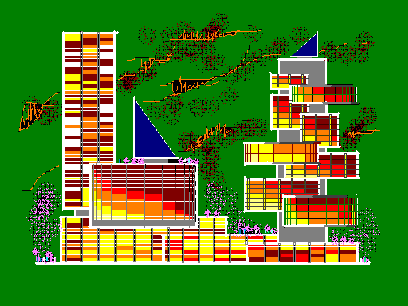|
Real Estate Bubble Types: Price, Supply, and Investment?
Stephen Chung Managing Director
Zeppelin Real Estate Analysis Limited
November
2004
Recently your humble author has read an article appearing in one of the most popular real estate portals in China, differentiating and describing 3 types of real estate bubbles: 1) a price bubble, 2) a supply [or vacancy] bubble, and 3) an investment bubble. On 1) a price bubble = this is when real estate prices are on such a high plateau that is so unexplainable and which crashes sooner or later, e.g. this is what Hong Kong had experienced from mid 1997 to mid 2003 when prices dropped some 65% from the peak price level. On 2) a supply bubble = this is when large numbers of completed or existing properties are not occupied / used or even bought up. This is what China may be experiencing in part in that supply keeps on growing despite significant vacancies being observed in some markets and sectors, notwithstanding the difference in the definition and calculation of ”„vacancy”¦ [note = ”„vacancy”¦ in China may only refer to those newly / recently completed properties that are not yet sold or occupied out of the total number of newly / recently completed units for that year or period in question i.e. it may not be based on the whole stock of the market]. On 3) an investment bubble = this is when significant resources, capital and financing are being poured into real estate, versus other capital investments. This may also be reflective of certain markets in China as well since investment into real estate has been growing year on year recently. It may also signifies that investment outlets are fewer in China and that many people find real estate a safe or profitable bet (note = whether this is realized is another matter). While it is interesting to see such categorization of real estate bubbles, your humble author does not think the demarcation is overly important or significant. Here are the reasons why: A) Under a capitalistic market economy, whatever bubbles end up being reflected in the price = via the price mechanism if it were allowed to function properly. An oversupply will be corrected when prices drop with suppliers (real estate developers or builders) canceling or slowing down their building projects. An overinvestment will be corrected when prices drop and discourage further investments. Naturally, some people (developers or investors etc) will get burnt but eventually the market is likely to survive. B) An oversupplied market cannot be sustained = unless some administrative measures are put in place to influence the functioning of the price mechanism. If not, i.e. that there is a functioning market with pricing mechanism, and there is no major real estate price (downward) adjustment despite a perceived oversupply, then perhaps the oversupply is exaggerated. Likewise for an over-invested real estate market. In short, it is inconceivable that in the long run, a real estate market can endure an oversupply and / or overinvestment situation without suffering from some significant (downward) price adjustments, assuming a market economy price mechanism exists.Notes: The article and/or content contained herein are for general reference only and are not meant to substitute for proper professional advice and/or due diligence. The author(s) and Zeppelin, including its staff, associates, consultants, executives and the like do not accept any responsibility or liability for losses, damages, claims and the like arising out of the use or reference to the content contained herein. |
Phone (852) 37576388 Fax (852) 37576399 E-mail contact@real-estate-tech.com
Address c/o Zeppelin, Unit 1007, 10/F, CCT Telecom Building, 11 Wo Shing Street, Shatin, NT, Hong Kong
Copyright rests with Zeppelin and/or relevant authors
